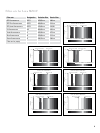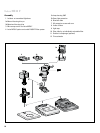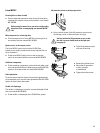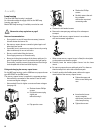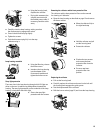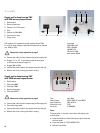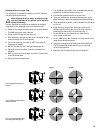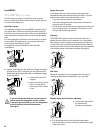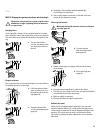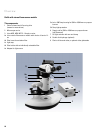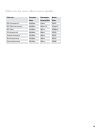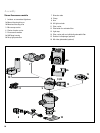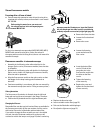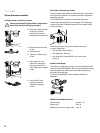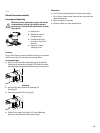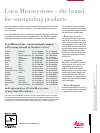
17
Use
MZ10 F: Bringing the specimen into focus and observing it
Observe the safety directions on page 4 and the recom-
mendations on page 5 regarding the use of the mercu-
ry-vapour lamp.
Changing filters
In the rapid filter changer, all four positions must be occupied,
either with filter sets or with dummy filter carriers (see page 16).
The active filter set is always the one with its inscription on the
left.
▶ Turn the sets of filters
until the inscription on the
one required is visible on
the left.
Dioptric correction
We recommend you to carry out the dioptric correction either in
transmitted light or in incident light:
▶ If the fluorescence illumi-
nator is switched on, use
the light stop to block the
light (page 16).
▶ Swing the dummy filter
carrier into the beam path
(page 16).
▶ Illuminate a flat test object with transmitted light
or with oblique incident light.
▶ Carry out the dioptric correction as directed in the user
manual for the stereomicroscope.
Observing fluorescence
Make sure that the UV protection screen is positioned
correctly (page 11).
▶ Turn the required
filter set into the beam
path (page 16).
▶ Switch on the supply unit (pages 14) and wait for two or
three minutes.
▶ Pull out the light stop
(page 16).
▶ Using the lowest magnification, observe the object.
• Thiswillgiveyouabetteroverallviewandyouwillbeableto
locate features of interest more easily.
▶ Refocus slightly if necessary.
▶ Observe the details at higher magnification.
Reflexes (hot-spots)
When the 1.6× planapochromatic objective is used at zoom
positions between 0.8 and 1.6, a slight reflex (hot-spot) occurs
inthelowerpartofthefieldofview;itdisappearsathigherzoom
positions. This reflex does not arise in conjunction with the
1.0× and 0.5× planapochromatic objectives or the achromatic
objectives.



